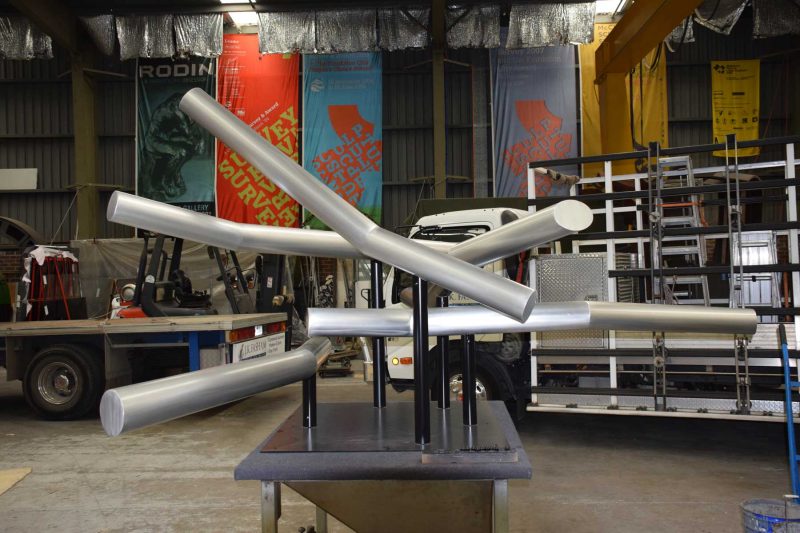Steel Sculpture Restoration: Fabricating Replacement Parts for Damaged Works
26 September 2024
The meticulous process of steel sculpture restoration, including the fabrication of replacement parts to preserve the integrity and beauty of damaged works.
Steel sculpture restoration is an essential practice ensuring these magnificent artworks’ longevity and integrity. As outdoor sculptures are often subjected to harsh environmental conditions, they can suffer damage over time, necessitating the fabrication of replacement parts. This process not only revives the original beauty of the sculptures but also preserves their historical and artistic significance for future generations.
The Role of Fabrication in Steel Sculpture Restoration
When a steel sculpture suffers significant damage, some components may need to be entirely replaced. This is where the fabrication of replacement parts comes into play. Fabrication involves creating new parts that match the original components as closely as possible in terms of material, design, and finish. This process is vital to maintaining the sculpture’s authenticity and ensuring that any new parts integrate seamlessly with the original structure.
Key Considerations in Fabricating Replacement Parts
When fabricating replacement parts for damaged steel sculptures, several key factors must be carefully considered to ensure the restoration is successful. These factors include:
• Material Matching: The first step in fabrication is selecting the correct type of steel that matches the original material. Different types of steel have distinct properties, such as tensile strength, corrosion resistance, and malleability. Using the wrong type of steel can compromise the sculpture’s structural integrity and alter its appearance.
• Design Precision: The new parts must replicate the original design down to the finest detail. This often requires advanced techniques like 3D scanning and modelling to capture the exact dimensions and contours of the original sculpture.
• Surface Treatment: Steel sculptures often have unique surface treatments, such as patinas or specific finishes. The fabricated parts must undergo similar treatments to ensure a consistent appearance across the entire sculpture.
• Structural Integrity: The replacement parts must look the part and be structurally sound. This involves careful welding and assembly to ensure the new parts can withstand the same stresses as the original components.
Restoration Techniques for Damaged Works
Several different techniques can be used to fabricate replacement parts for damaged steel sculptures. These include:
• Welding: Welding is a process of joining two or more pieces of metal together using heat and pressure. It is a common technique for fabricating replacement parts for steel sculptures.
• Casting: Casting is the process of creating a metal object by pouring molten metal into a mould. It can be used to fabricate complex replacement parts for steel sculptures.
• Forging: Forging is a process of shaping metal by hammering it into a desired form. It can be used to fabricate simple replacement parts for steel sculptures.
Importance of Steel Sculpture Restoration
Steel sculpture restoration is important for several reasons. First, it helps to preserve the cultural heritage of a community. Second, it can help to improve the appearance of public spaces. Third, it can help to increase the value of a property. If you have a steel sculpture that needs to be restored, it is important to find a qualified restoration company.
JK Fasham recognises that steel sculpture restoration is about more than just repair—it’s about preserving the artist’s legacy and the work’s cultural significance. If you have a steel sculpture that needs to be restored, let us do the work for you.
Optimized by: Netwizard SEO


